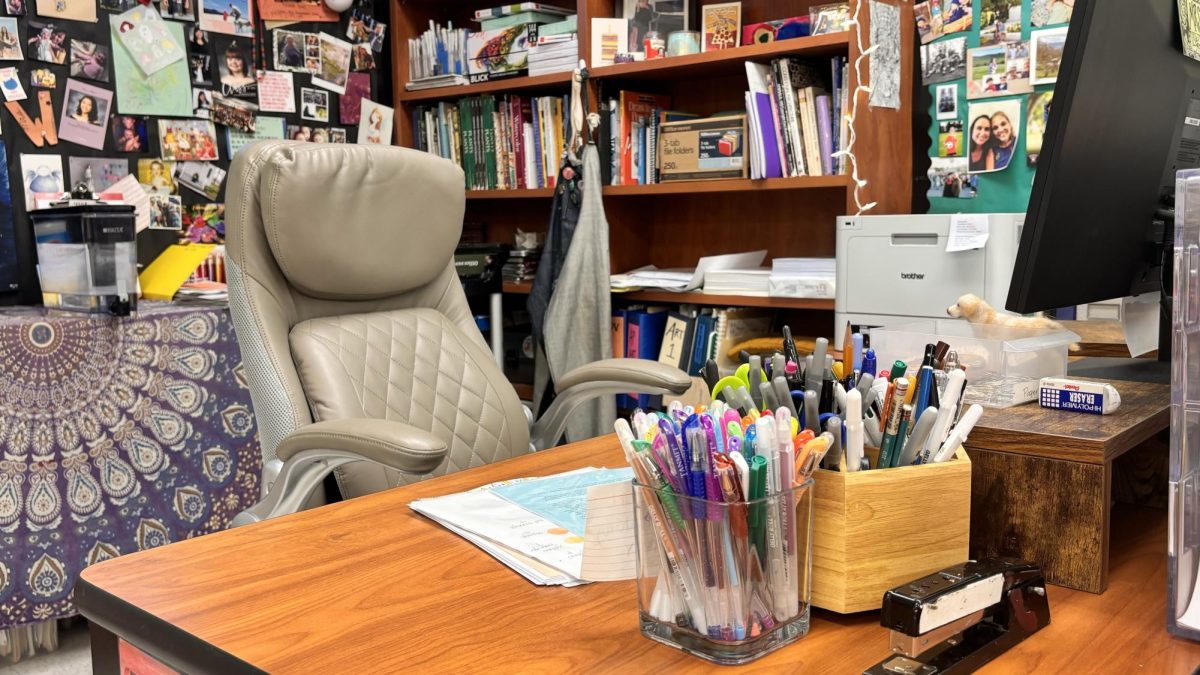On March 25, the San Ramon Valley Education Association (SRVEA) held an online town hall to discuss the impact of the $26 million budget reduction plan approved by the SRVUSD Board of Education in February. The meeting also provided updates on the results from SRVEA’s seventh bargaining session on March 11, addressing the overestimation of the budget, declining enrollment and state funding. Hosted by SRVEA president Laura Finco and featuring three panelists representing the elementary, middle and high schools – Sheila Mendonsa, Chelsea Balough and Allison Hussenet – the meeting covered the effect of the budget cuts and SRVEA’s proposed solutions.
The meeting, highly anticipated by the community, garnered around 400 registrants and over 300 attendees. Community members had the opportunity to ask questions for SRVEA to address during the presentation and during the Q&A session at the end.
The effect of budget cuts
“In this conflict, we’re (SRVEA) trying to prioritize solutions to help reduce and modify the budget, while management is focusing on the predetermined budget reduction plan and the cuts,” Laura Finco, SRVEA president, explained in opening remarks. “They’re demanding that SRVEA agree to 13.7 million dollars in cuts, even though we provided them with solutions that could save nearly 20 million dollars.”
Sheila Mendonza, a kindergarten teacher in a job share at John Baldwin Elementary School, began the discussion by addressing increasing class sizes. Although she has worked for nine years in the district, she received an Reduction in Force (RIF) notice, a process for permanently releasing employees due to restructuring or a lack of funding, primarily because of her job share position.
“As a teacher, having smaller class sizes is imperative,” Mendonza said. “It makes a huge difference in students’ education, building community in the classroom and what we [as teachers] can do in our classrooms.”
Chelsea Balough, a school counselor at Stone Valley Middle School, introduced herself next, expressing concerns about potential counselor cuts.
“We’re in the trenches with your children every day,” Chelsea Balough said. “The support we provide directly impacts the overall climate of our schools. [On a] broader scale, we play a vital role in shaping a safe and supportive school environment.”
Allison Hussenet, a teacher librarian at DVHS, wrapped up the panelist introductions, emphasizing the importance of maintaining librarian positions.
“The library is a safe haven for so many students,” Allison Hussenet said. “Losing that second [teacher librarian] position means students are going to lose access to a safe space in their most vulnerable moments. The support that we can give as two just won’t be possible [with only one of us].”
SRVEA challenges SRVUSD’s budget approach
After the panelists, the conversation turned to Melinda Daly, SRVEA’s vice president. She discussed the association’s recent filing of an unfair practice charge against the district, citing a lack of “good faith” negotiations while also criticizing the district’s budget estimates. Then, Daly addressed SRVEA’s first problem: the underestimation of the budget. While SRVEA understands that the overestimation of the budget is problematic, concerns have been raised about management’s methods of budgeting.
“We’re looking to see where we could come in a little tighter because now we’re in a situation where any possible revenue is going to help,” Daly explained.
Bob Allen, SRVEA organizing chair and teacher at California High School, mentioned SRVUSD’s concern with declining enrollment.
“[SRVEA’s] concern is they’ve been saying declining enrollment, declining enrollment, declining enrollment, and this is the first time they’re tackling it,” Bob Allen said. “If management had implemented our SRVEA solutions, they could have potentially increased revenue, due to increasing average daily attendance, by at least eight million. Management’s stubborn approach of refusing to create a credible plan literally will cost our students valuable educational services.”
DeeDee Judice, SRVEA lead negotiator and kindergarten teacher at Golden View Elementary School, spoke about the management’s reduction plan for its staff. She described an increase of 13 added management positions since 2020 and a large sum of money going towards a small group of individuals in the time of the budget deficit.
“For the past few years we have had a working relationship with management and have been able to work together to problem-solve for solutions that protect our students. This year, things have taken a different path, and we have been shut down immediately,” Judice said. “The unwillingness of management to cut deeper in their section to protect our students has been disappointing.”
Larry Spatz, the California Teachers Association staff member working with SRVEA, was also disappointed with management’s behavior.
“There was nothing credible about the plan that management presented at the table. In fact, they admitted they just didn’t have the time to create a credible plan, and this was six months into the school year,” Spatz said.
SRVEA’s potential funding solutions
Spatz recognized that an employment retirement plan created in 1984 would reduce teacher layoffs and increase retiree benefits, drawing parallels to the recent adoption of this plan by the San Francisco Unified School District in face of similar budget issues affecting SRVUSD.
“This idea is already here and management was unable to even make an attempt [to consider it],” Spatz stated.
Daly also mentioned the possibility of a discretionary grant in Gov. Gavin Newsom’s budget. Daly talked about SRVEA’s efforts to contact our state legislators, including Assemblywoman Rebecca Bauer-Kahan, State Senator Tim Grayson, State Superintendent Tony Thurmond, and Gov. Newsom.
“If this money comes in, we would be able to save mental health support in the district for next year, and then by that time, hopefully other revenue enhancement ideas would kick in,” Daly said. “[However], we thought we were going one way, but we got turned around and told that this wasn’t going to happen unless we agreed to all of the other cuts. That has not been our approach.”
Spatz then discussed management spending, asserting that management spent about twice as much last year than in 2019-2020 although there are fewer students in the school district.
“We believe that this exorbitant, literal double of the expenditures is due to mismanagement of the special services in this school district,” Spatz said.
Finco ended the presentation aspect of the town hall by addressing the reserves in SRVUSD’s budget. While Finco noted that the district has been acting appropriately in recent years by spending the reserves down from 13% of the budget in 2020 to about 4%, – in compliance with state law – she pointed out misuse of Fund 17. This fund specifically sets aside money to be used for declining enrollment purposes – SRVUSD has approximately $3.8 million currently.
“If there’s a line item set aside to help mitigate declining enrollment, but that money can’t be used, then what can it be used for? If we’re not going to use that money now, when are we?” Finco questioned.
Finco ended the presentation segment before transitioning into the Q&A portion by stating: “I’m at a loss for words because I cannot imagine reducing the workforce by over 200 educators, which doesn’t begin to include others that are also affected by these budget cuts. When we’re looking at the solution, we’re trying to find ways to be able to mitigate the necessity for the cuts by modifying the budget and working towards a solution. We believe, as presented this evening, that we have those solutions in hand.”






